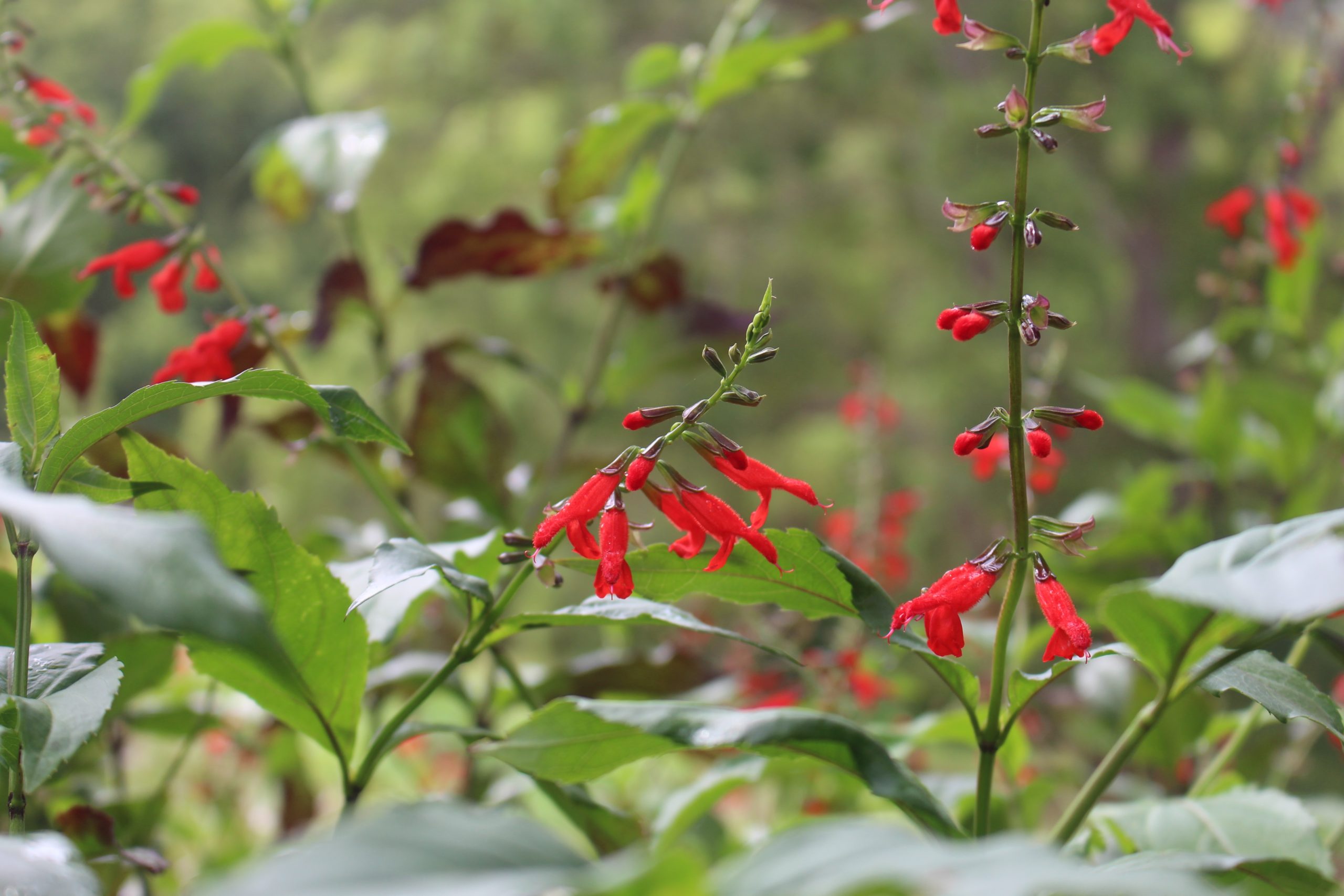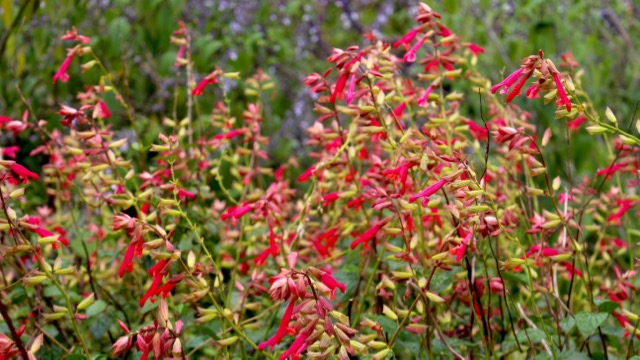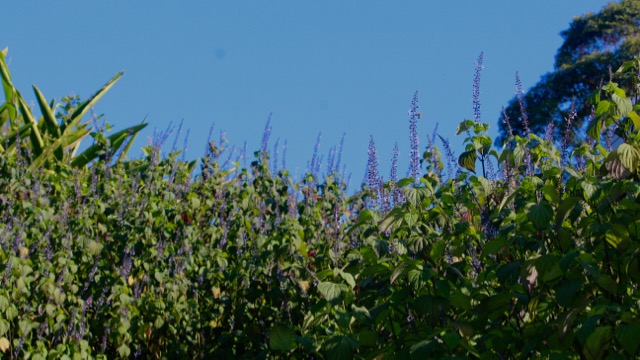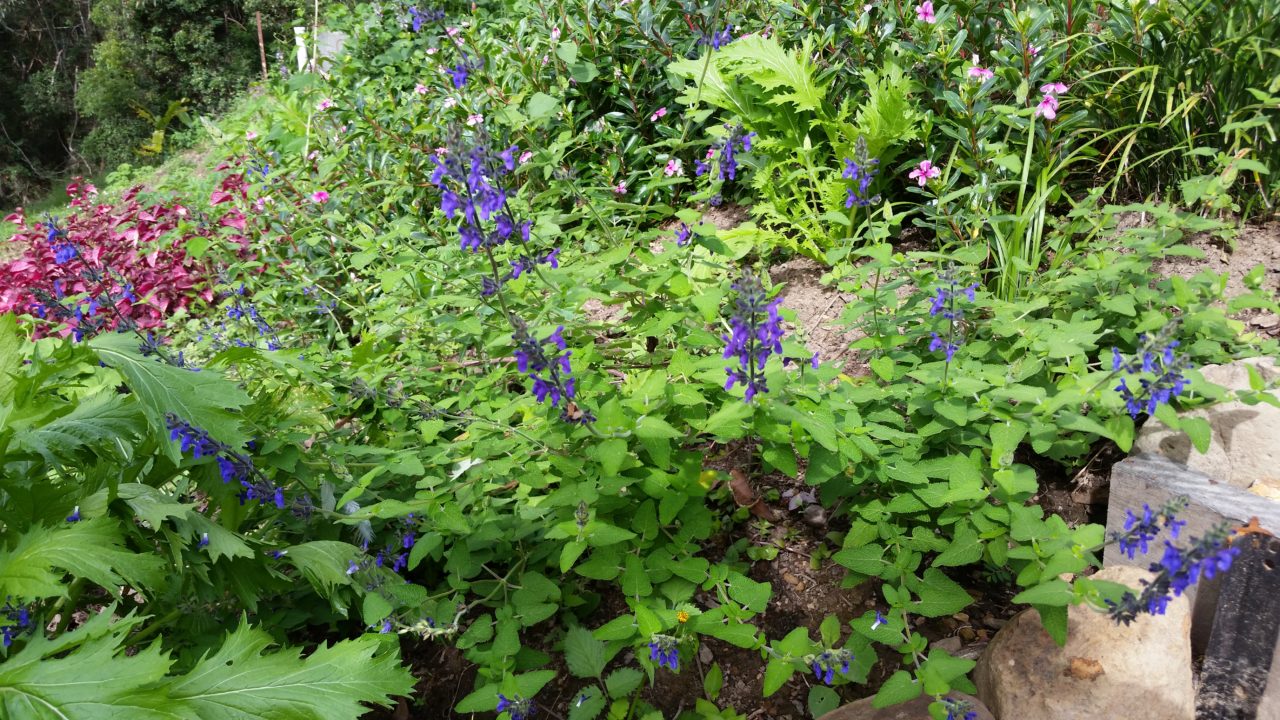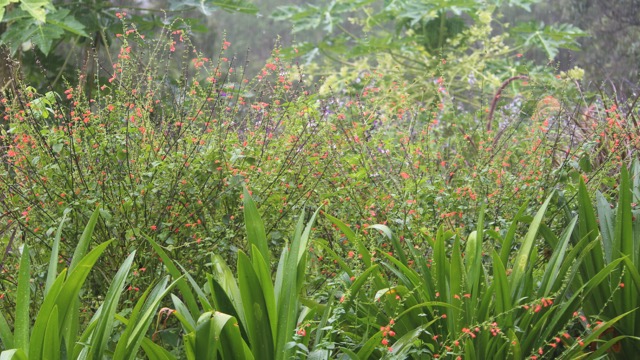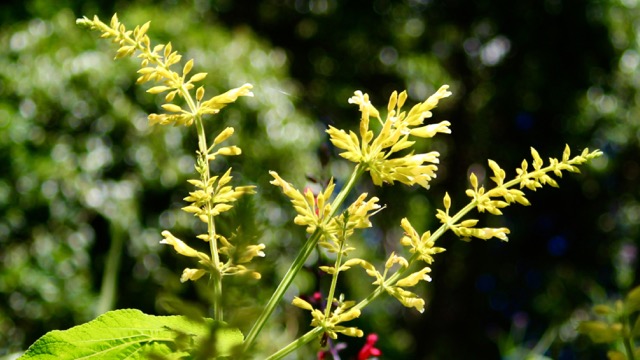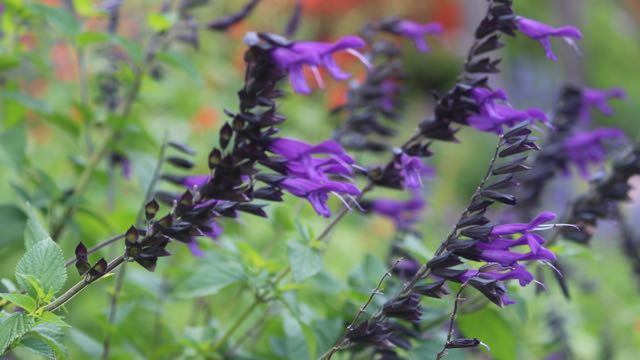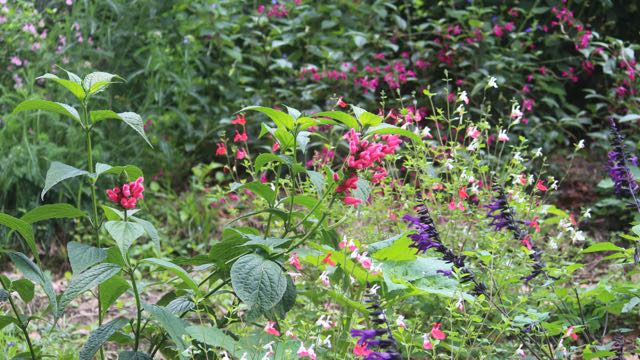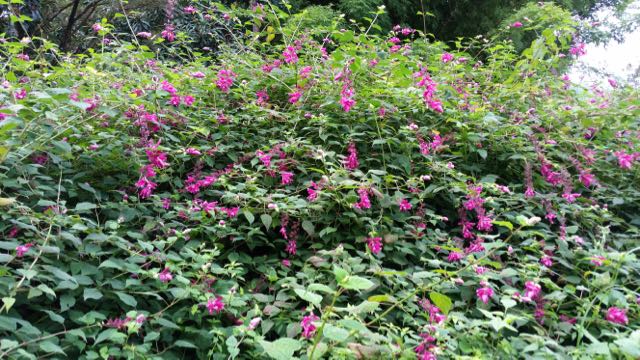Clear red Salvia miniata flowers shine brightly from a shady spot in the garden. They contrast beautifully with the dark green, shiny leaves. According to BC, Salvia miniata comes from shaded mountain hillsides at around 600 m height, in warm and moist parts of Belize, and Chiapas in Mexico. Consequently it needs a frost-free climate to survive outdoors. Although BC describes it as a herbaceous perennial, it grows and flowers year-round here. The thin glossy leaves give it a lush look for a salvia, but it is surprisingly drought tolerant; I kept…
Read MoreCategory: Ornamentals
Salvia Ember’s Wish
Salvia ‘Ember’s Wish’ is one of the stand-out cultivars at the red end of the spectrum. Not a pure red, Robin Middleton describes the colour as coral, which is helpful. I think the photos here are fairly true to nature.
Read MoreSalvia roscida (fallax)
Salvia roscida has a unique form which gives it a particular role in my garden as a hedge, screen or pioneer. It is tall, densely foliaged and upright, which makes it useful as a hedge or screen. Spikes of pale blue flowers are held vertically, above the foliage. As Rolando Uria comments, the stiff spikes of flowers are reminiscent of Plectranthus (Coleus). Here, flowers start in May (late Autumn) and last until Spring. Description Salvia roscida can grow more than 2 m high. The caney stems branch from the base…
Read MoreSalvia Harmony
This is a lovely low growing salvia with masses of deep blue flowers from late Summer, and attractive foliage the rest of the time. Salvia ‘Harmony’ is also called Salvia scordifolia by some, but as ‘scordifolia’ means ‘garlic leaf’, I am inclined to follow the opinion that it’s not a real name. Robin Middleton writes that it is reported to have been found in Ecuador, then grown and sold for a while under the wrong name. He also writes that it is particularly difficult to grow in the UK due to…
Read MoreSalvia naming – good to understand for gardening, essential for science
To avoid confusion, it’s good to understand salvia naming conventions. There are a couple of ‘levels’ of naming, to do with whether a plant is a species as found in the wild, or a garden cultivar. I try to use standard naming as it minimises ambiguity. Species Botanists collect plants and name them in the binomial (two name) system of genus and species. Salvia is the sage genus, and for example ‘officinalis‘ is the herb sage species. The binomial is indicated by italics, i.e. Salvia officinalis. The genus gets a…
Read MoreSalvia resources; books and websites
There are plenty of resources on salvia growing; mainly websites but also books. As growing conditions vary so much, it’s good to consult a reference from as close as possible to your own climate, as well as general reference articles on particular plants. I am listing the resources I mainly use here partly as a bibliography for my posts. I use the standard surname system, indicated below in bold. The classic salvia reference book is Betsy Clebsch‘s ‘The New Book of Salvias’ (2003), published by Timber Press. It seems to…
Read MoreSalvia madrensis
Salvia madrensis is remarkable among the sages for having yellow flowers. This makes it particularly desirable for anyone with a salvia collection. It is called forsythia sage in the Northern Hemisphere, less so here where Forsythia is rarely seen.
Read MoreSalvia Amistad
Salvia ‘Amistad’ is one of the best performing cultivars and a must-have plant for a salvia collection. It has large purple-blue flowers in dark purple calyces, and will flower abundantly for most of the year in warm climates. It is a bushy salvia, about 1.5 m high and 2 m across. Leaves are around 7 x 5 cm, broad at the base and coming to a point, mid green and covered with tiny stiff hairs. Amistad was discovered and introduced by Argentine salvia expert Rolando Uria. It is believed to…
Read MoreSalvia cultivation; what are the best growing conditions?
Salvia cultivation overall tends to be straightforward. They are on the whole undemanding plants with a few pests and a few basic needs. There are a few generalisations that can be made. As a group, they tend to like deep, well drained soil, and are not overly fussy about pH or soil nutrients. Of course the more you get to know them the more you see that they are a diverse group and have a matching range of optimal growing conditions, which you can use to your advantage in siting…
Read MoreSalvia involucrata, a big showy subtropical sage
For sheer size and winter colour, Salvia involucrata varieties are outstanding in our subtropical garden. This is the original salvia in our collection. When we first moved into Hill House there was a well established patch growing at one of the entrance gates. It’s well away from the current house but nicely placed on the driveway to announce the house paddock with big pink flowers from autumn to spring.
Read More
